So it started when I replied to a comment (that itself replies to me talking about this project):
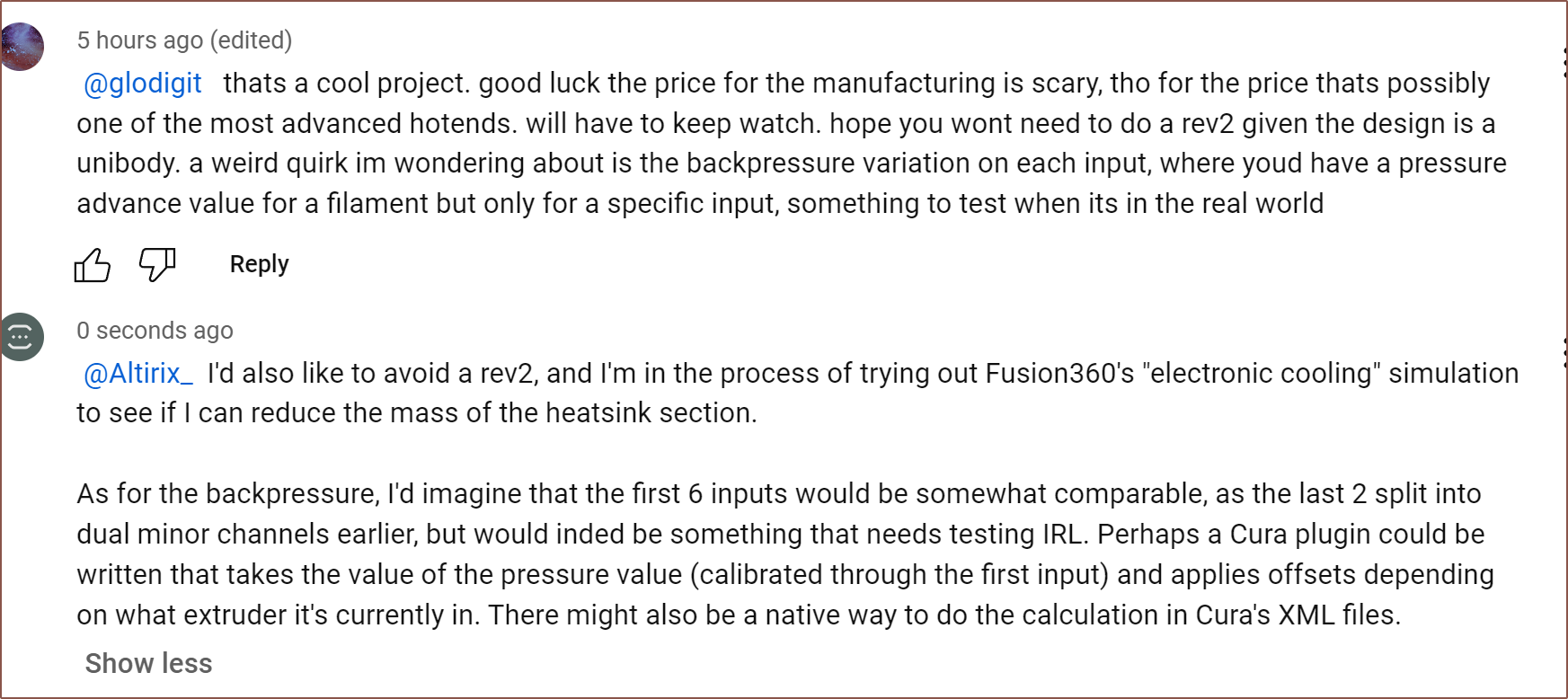
Trying to set up a simulation
I was thinking that it would be as simple as setting up an electronic cooling simulation in Fusion360:
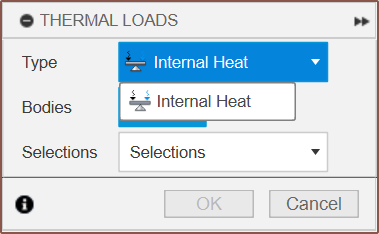
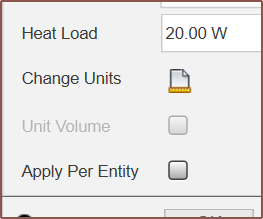
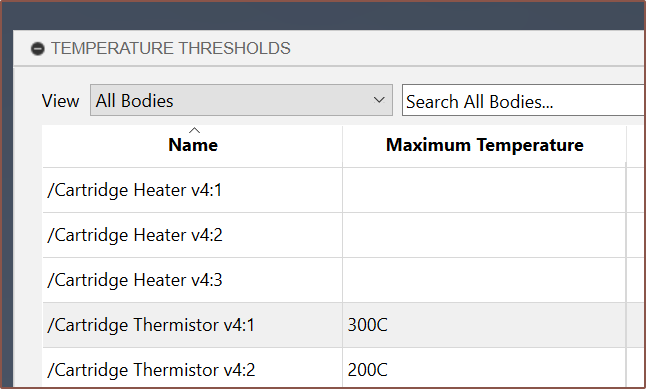
But then I go to solve and:


Thus, I started looking around for another solution.
Trimming down the mass of the hotend
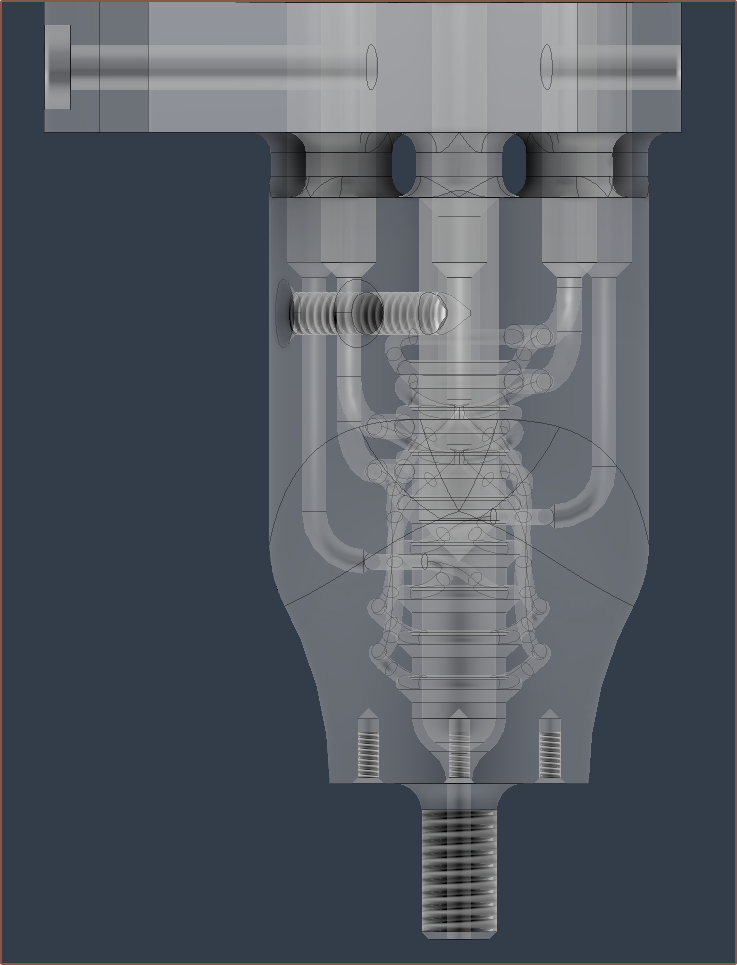 I realised that I could use a smaller elipse for the body of the hot section. I also tweaked the thermistor cartridge so that less of the hole depth needed to be tapped:
I realised that I could use a smaller elipse for the body of the hot section. I also tweaked the thermistor cartridge so that less of the hole depth needed to be tapped: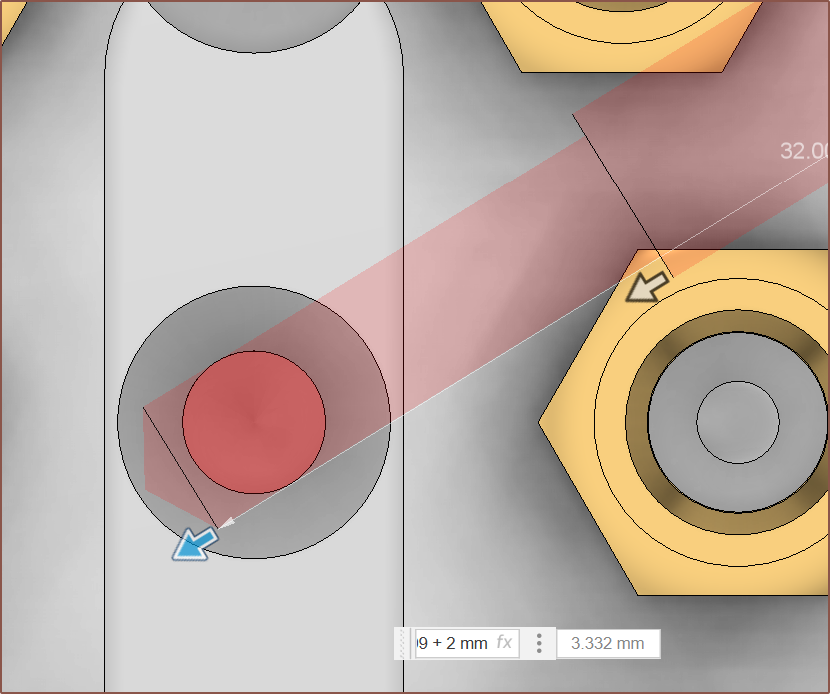
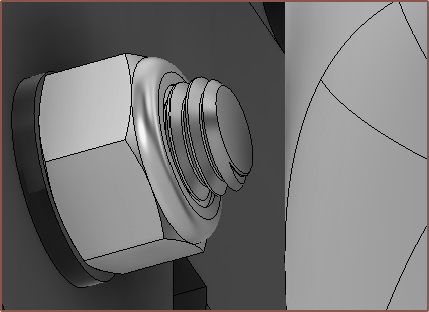
Trying ElmerSolver in FreeCAD
The main one I stumbled on was ElmerSolver in FreeCAD:
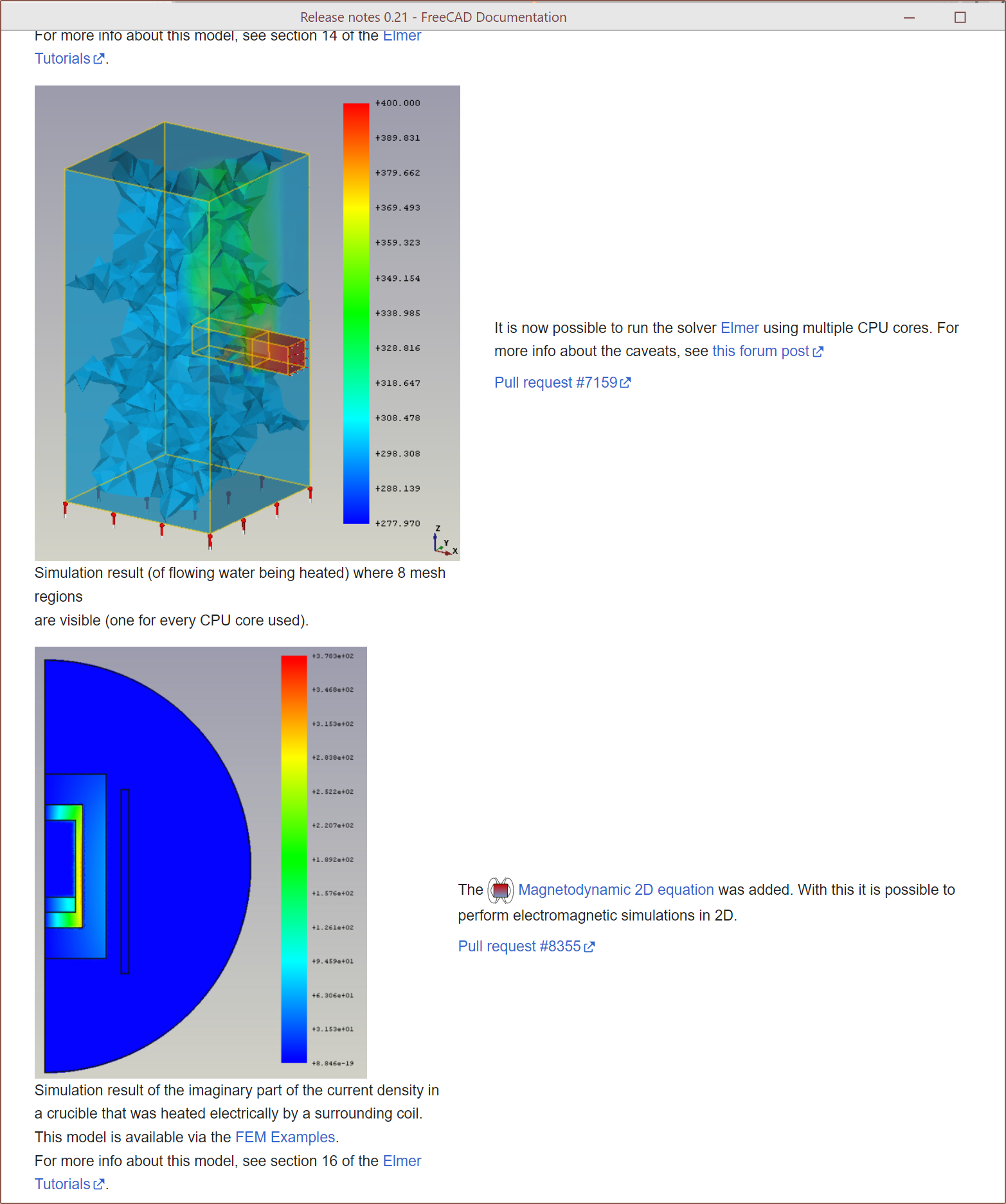
I soon realised that Elmer was the software I was looking into for Tetrinsic too. Anyway, I imported the .step into FreeCAD and noticed that it looked slightly longer:
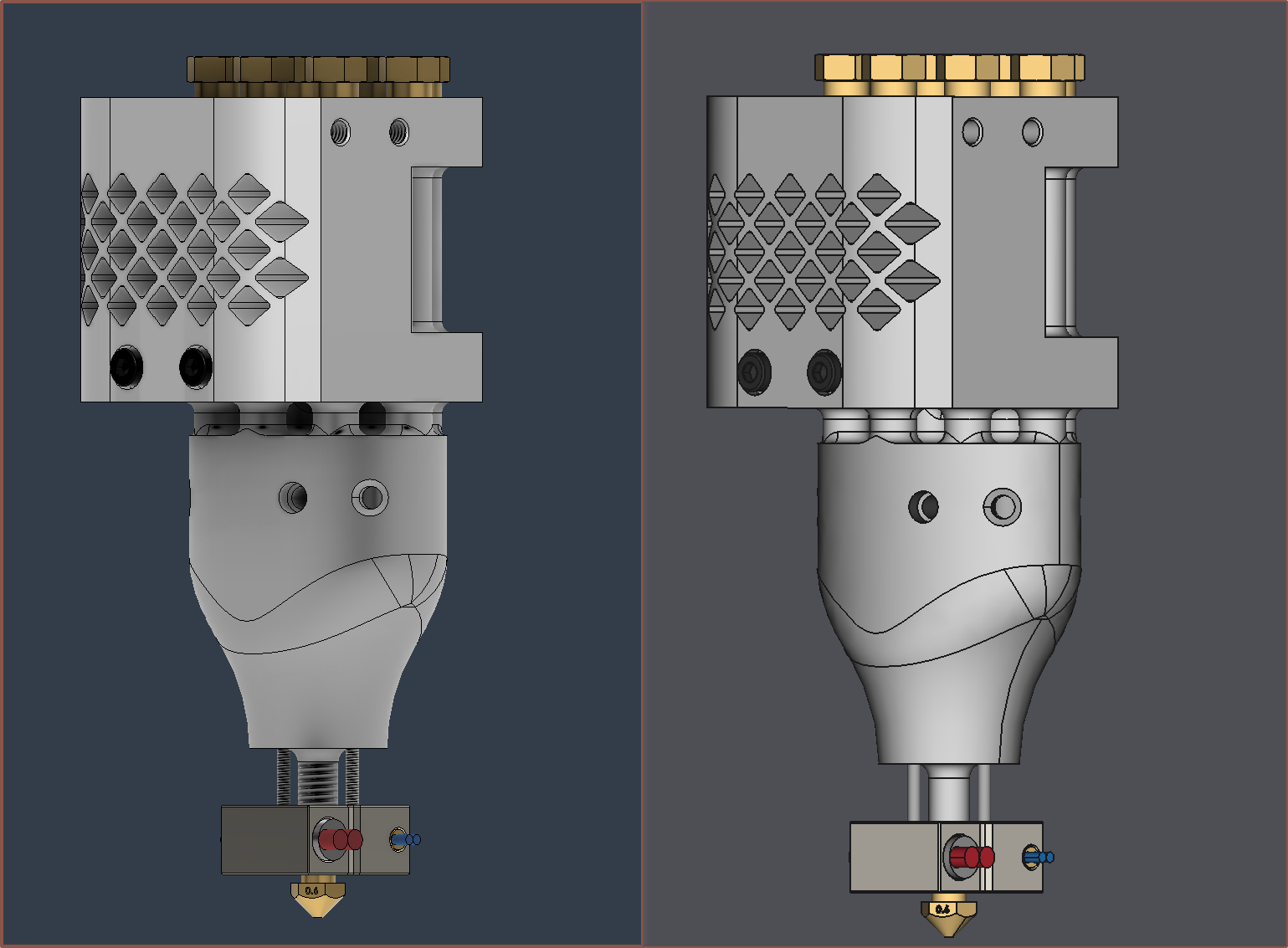
I decided to move on from that mildly interesting observation and start messing around with features until something exploded:

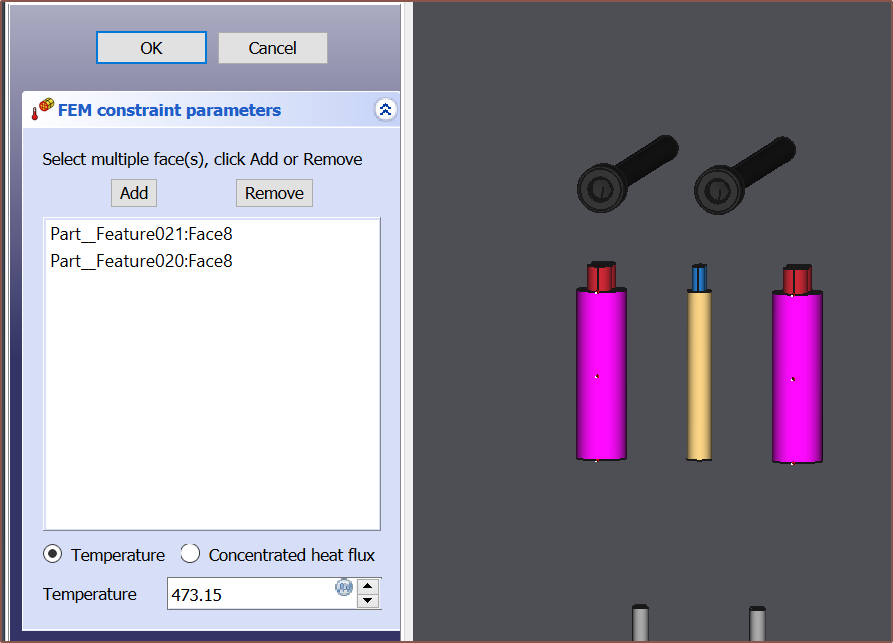
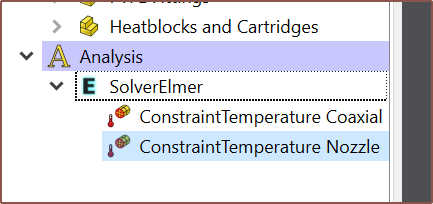
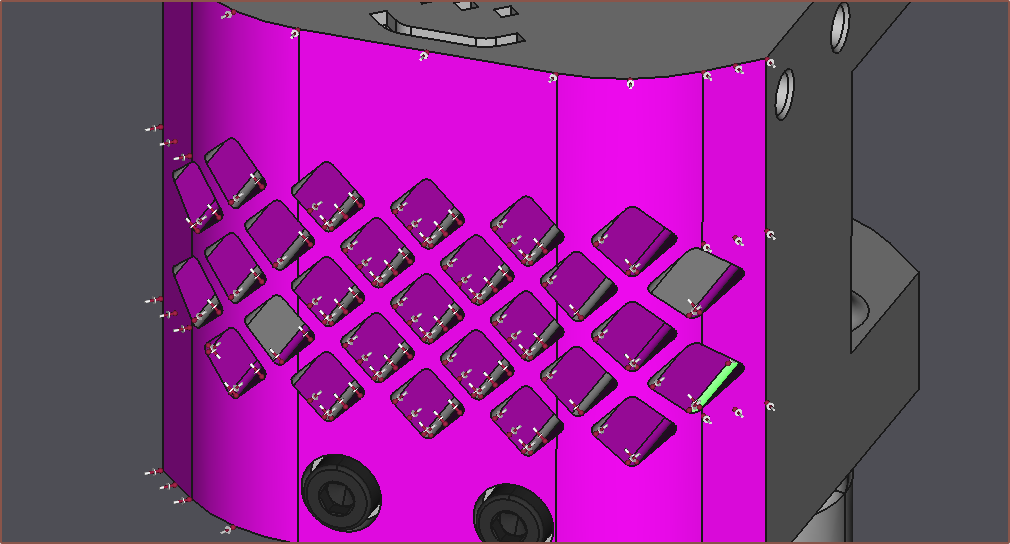
Looking for other solutions
- There's Simscale but it seems that the free teir only gets 10 solves and there was no mention that they reset after a certain amount of time.
- There's OpenFOAM and I'll have to look into that, since FreeCAD supports that too.
- There is Simflow that is based on OpenFOAM that seems to have a very nice-sounding free tier
Further design optimisations
I asked Elelven about any price reduction strategies and she, once again, suggested to skip on the tapped threads:

I thought that it would be a good idea to actually modell the important threads into the part, which are all the M8x1 threads and the M6x1 thread at the bottom. I watched the first strategy in the below video and looked at comments, and decided to offset the faces by the equations below the video.
tol = 0.3mm Angled Faces Offset: -tol / 4 Vertical Faces Offset: -tol / 2
Lastly, I deleted the bottom-most face so that there wouldn't be a 90 degree overhang where the thread meets the internal chamfer:
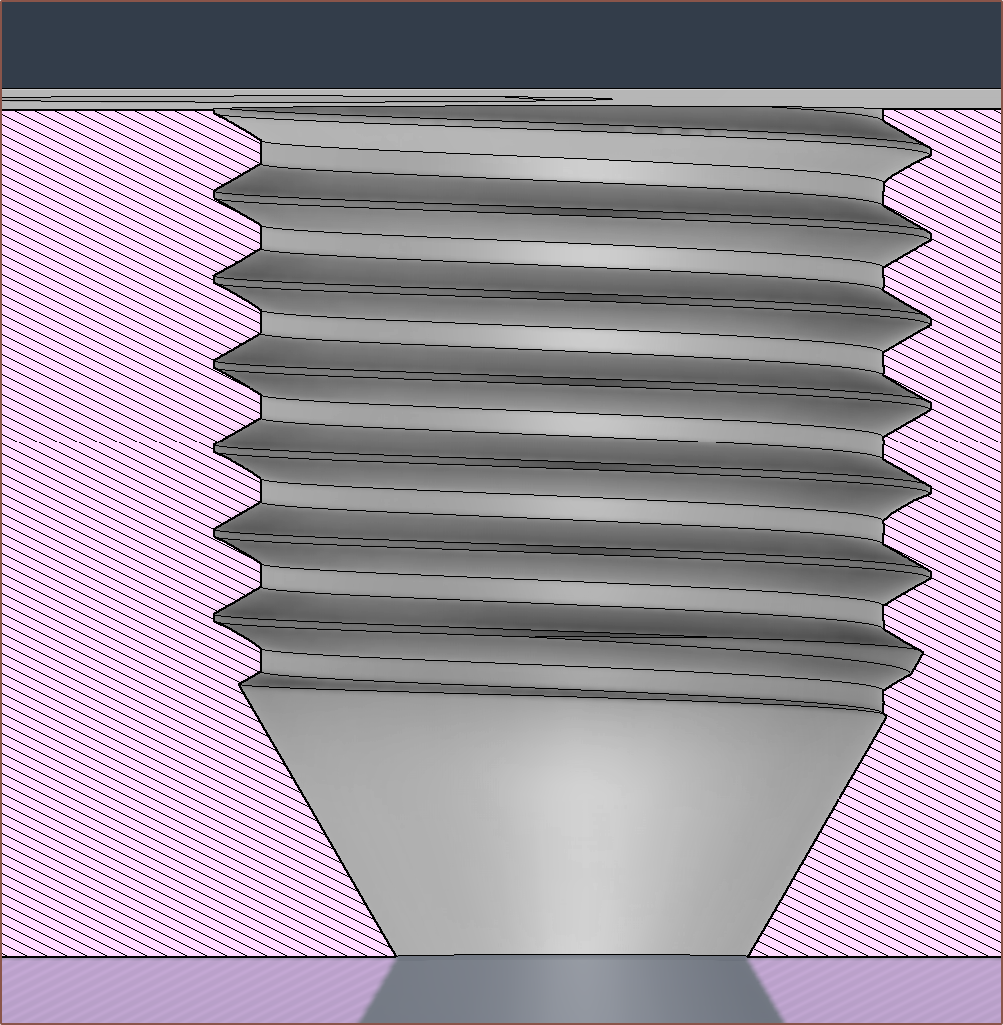
Then I did the M6:
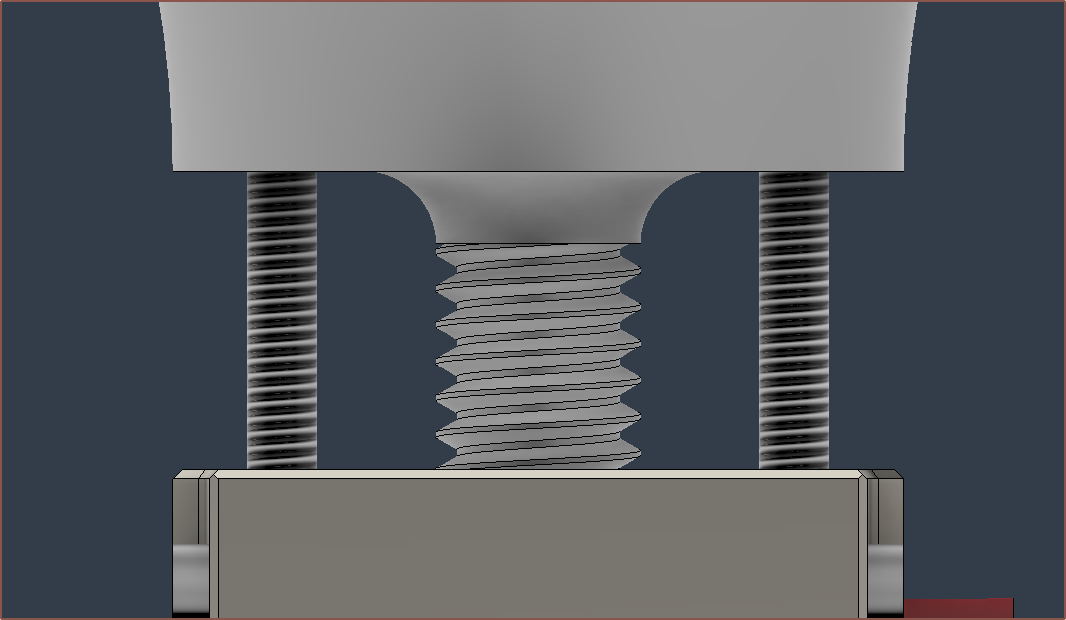 The next thing to do was to remove the flat face that would require the printer to bridge 90-degree overhangs and replace them with 50 degree overhangs. To get the starting chamfer to work, I first had to offset the eliptical face:
The next thing to do was to remove the flat face that would require the printer to bridge 90-degree overhangs and replace them with 50 degree overhangs. To get the starting chamfer to work, I first had to offset the eliptical face: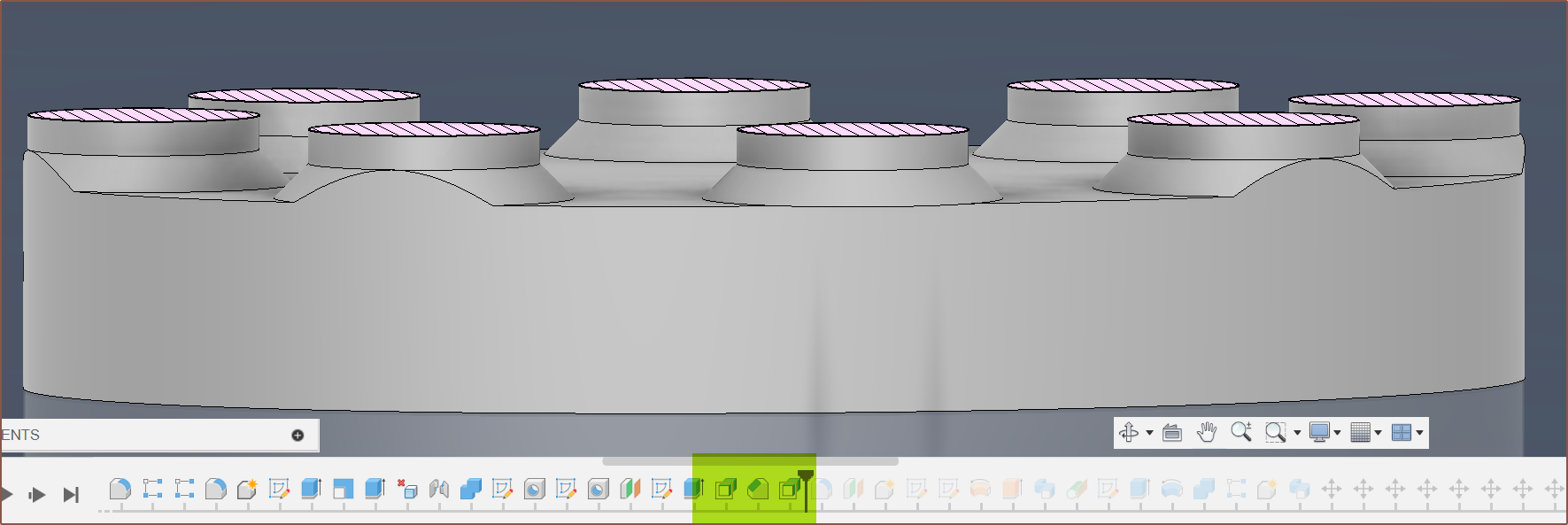
Then I could do some more DeleteFaces magic to obtain this:
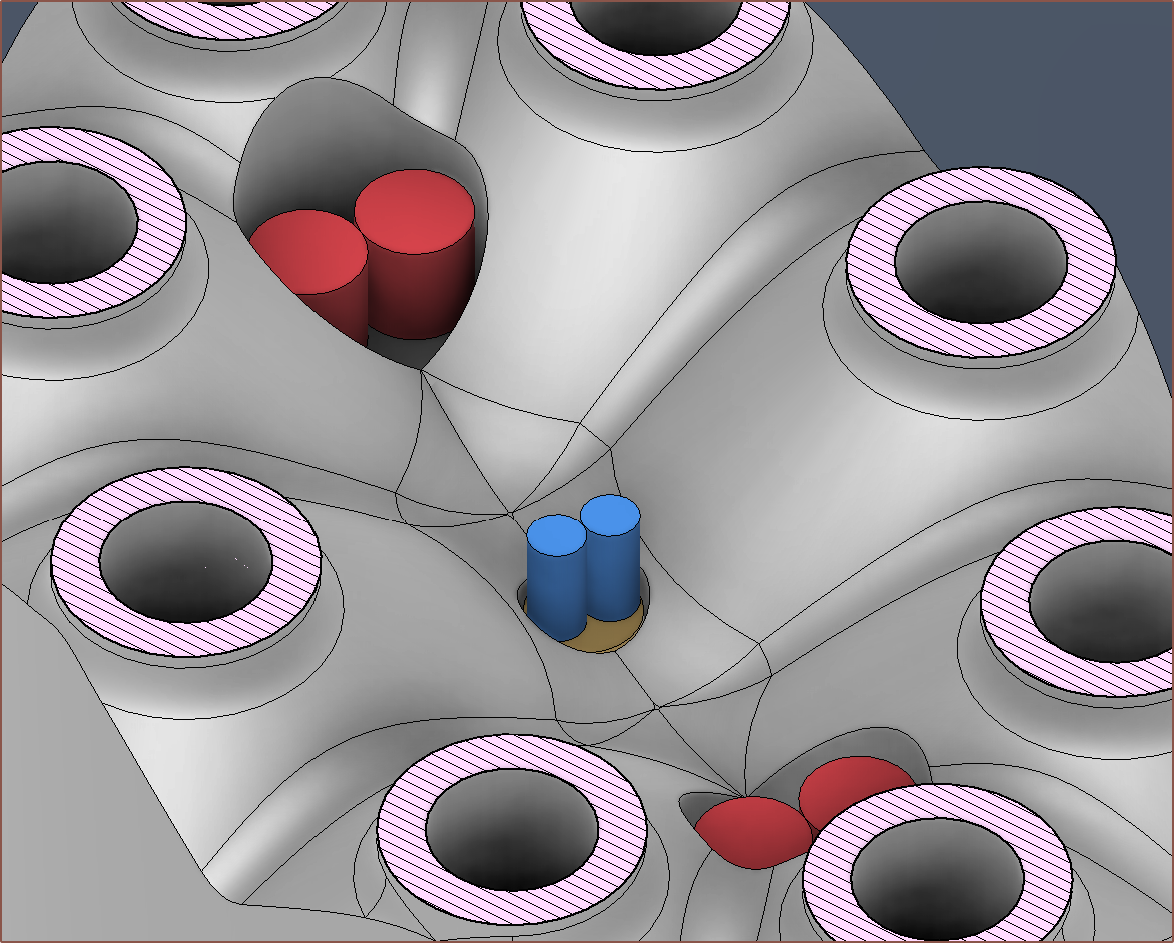
Lastly, I pushed the below face down to save around another 3 grams. The result is that the autoquote is now $167.17, over $20 lower than the first version I sent to PCBway.
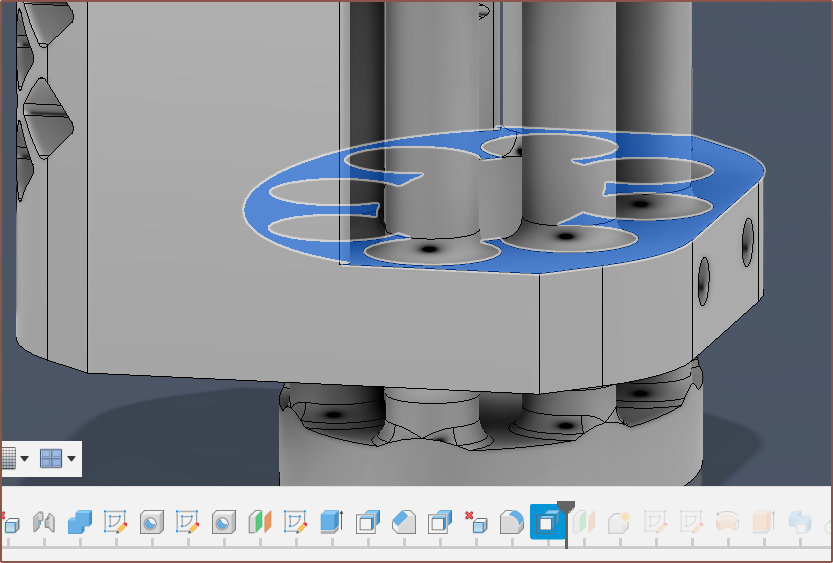 The end result looks a bit more interesting now:
The end result looks a bit more interesting now: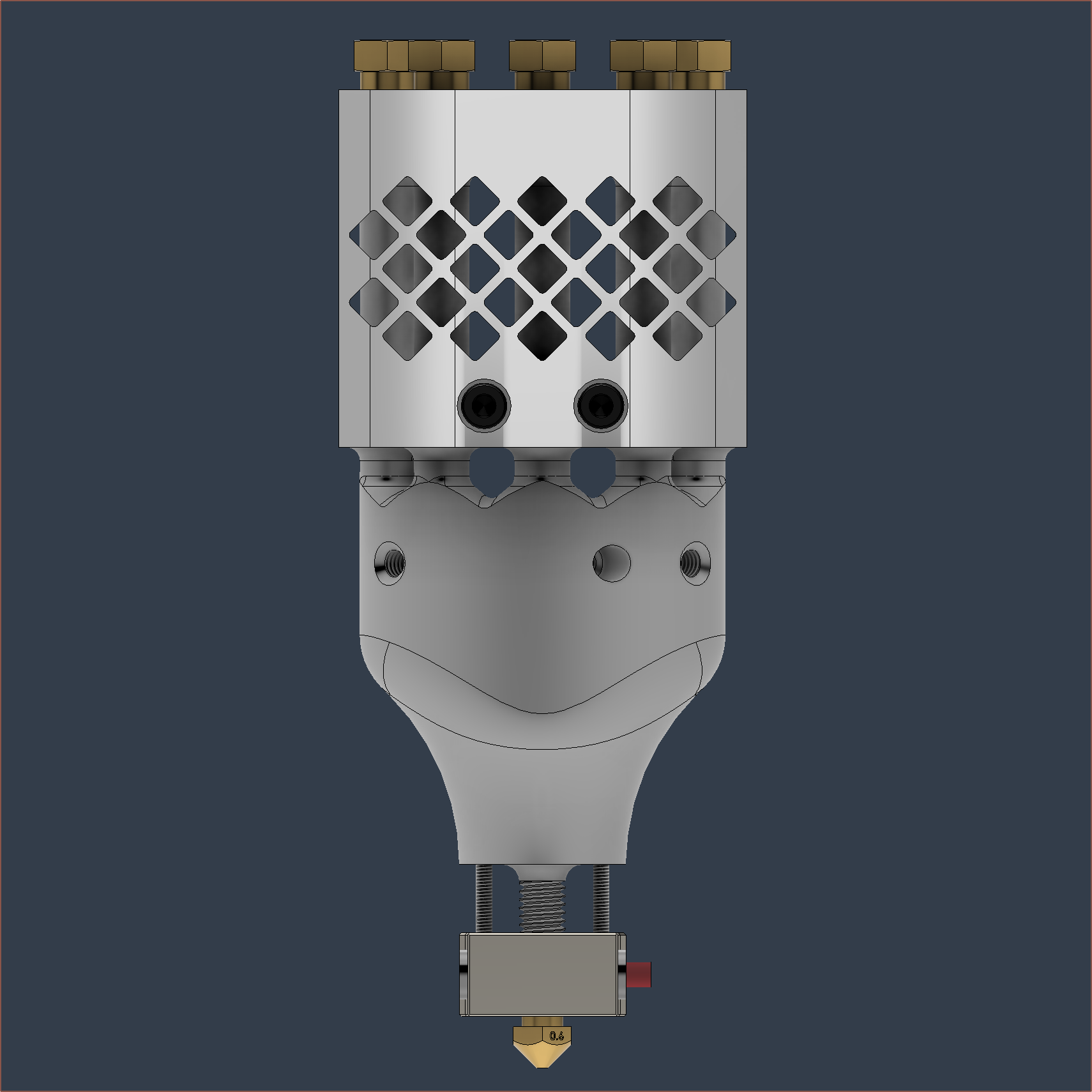 The bounding box (compression fittings to nozzle tip) is 49 x 49 x 124mm and the printed mass is 212g (down from 241g from the first version I sent to PCBway), which is in the same ballpark as 10W+ (output) laser diode module sizes. Unfortunately, it seems this hotend is going to be in the same ballpark in terms of price too.
The bounding box (compression fittings to nozzle tip) is 49 x 49 x 124mm and the printed mass is 212g (down from 241g from the first version I sent to PCBway), which is in the same ballpark as 10W+ (output) laser diode module sizes. Unfortunately, it seems this hotend is going to be in the same ballpark in terms of price too.[08:40] I just got the price and it's a whole $194.00, so the additional cost for tapped threads is likely the similar $30-ish that I experienced back when I designed and submitted the printed coaxial heatblock.
[20:40] I also looked at the additional fees involved. Fedex is suprisingly the cheapest option, even lower than others like China Post or PostNL. At an optimistic best, the entire cost is £182, but could be as much as £182 + 20% duty + £12 Fedex fee = £230.
[Jan 05] I found the issue with Fusion360; I needed to change the cloud credic preferences.

I then proceeded to try and set up a thermal study, trying to get over the hurdles along the way:
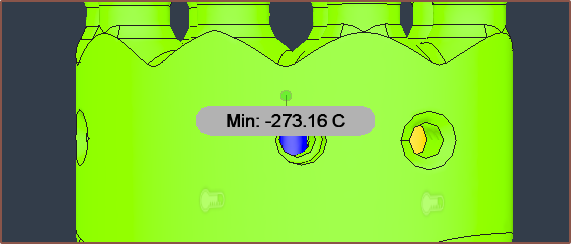

Then alculated the convection coefficient:

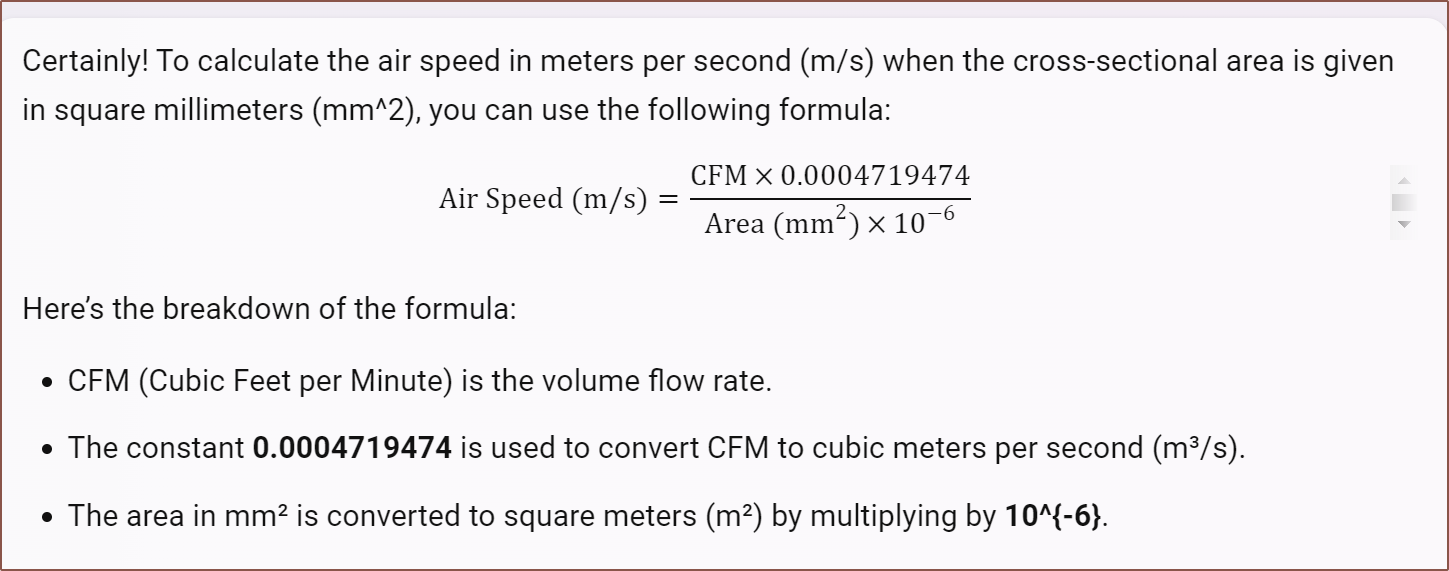
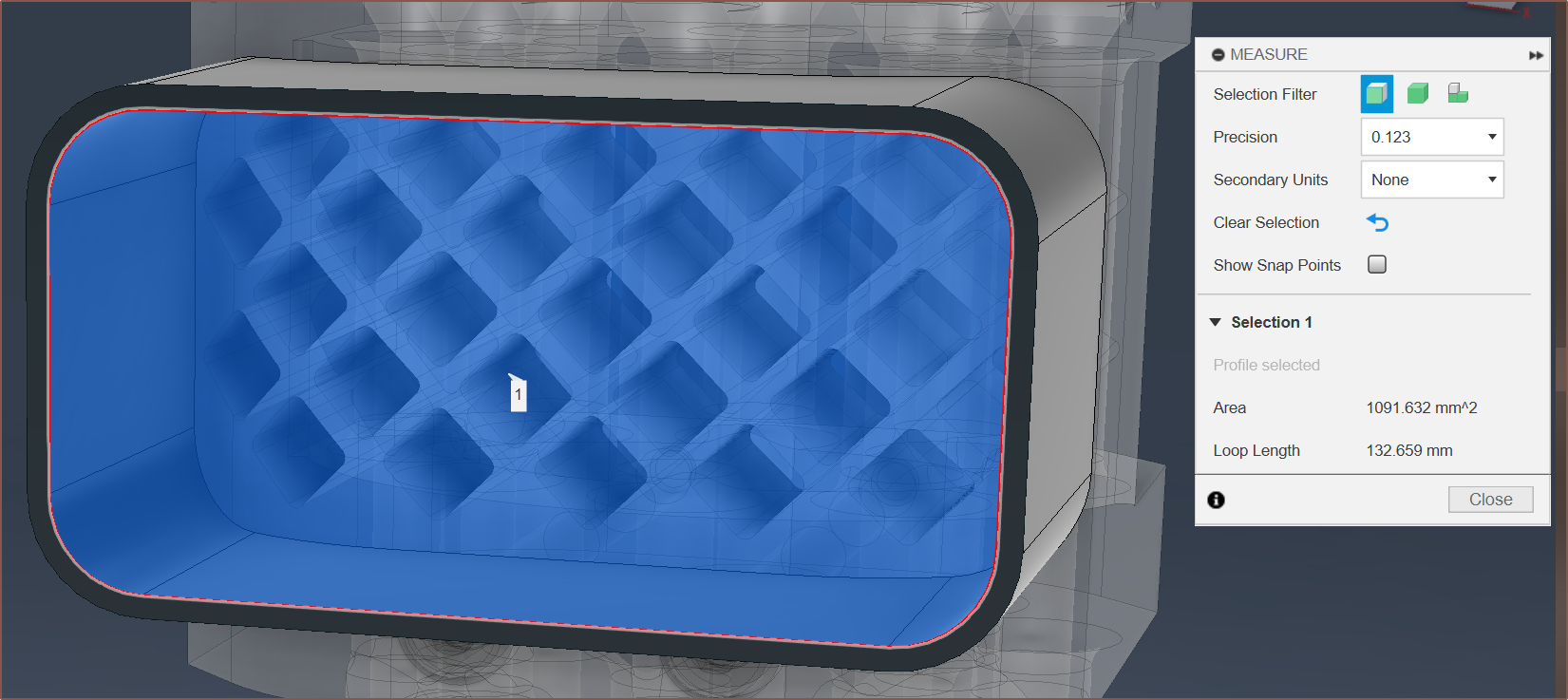
(11.89 * 0.0004719474) / (1092 * 10 ^ -6) = 5.1386946758 m/s 10.45 - 5.13 + 10*sqrt(5.13) = 27.96950330581225 W/m^2-K
And this is the result for a nozzle-cartridge temperature of 250C and coaxial-cartridge temperature of 180C:
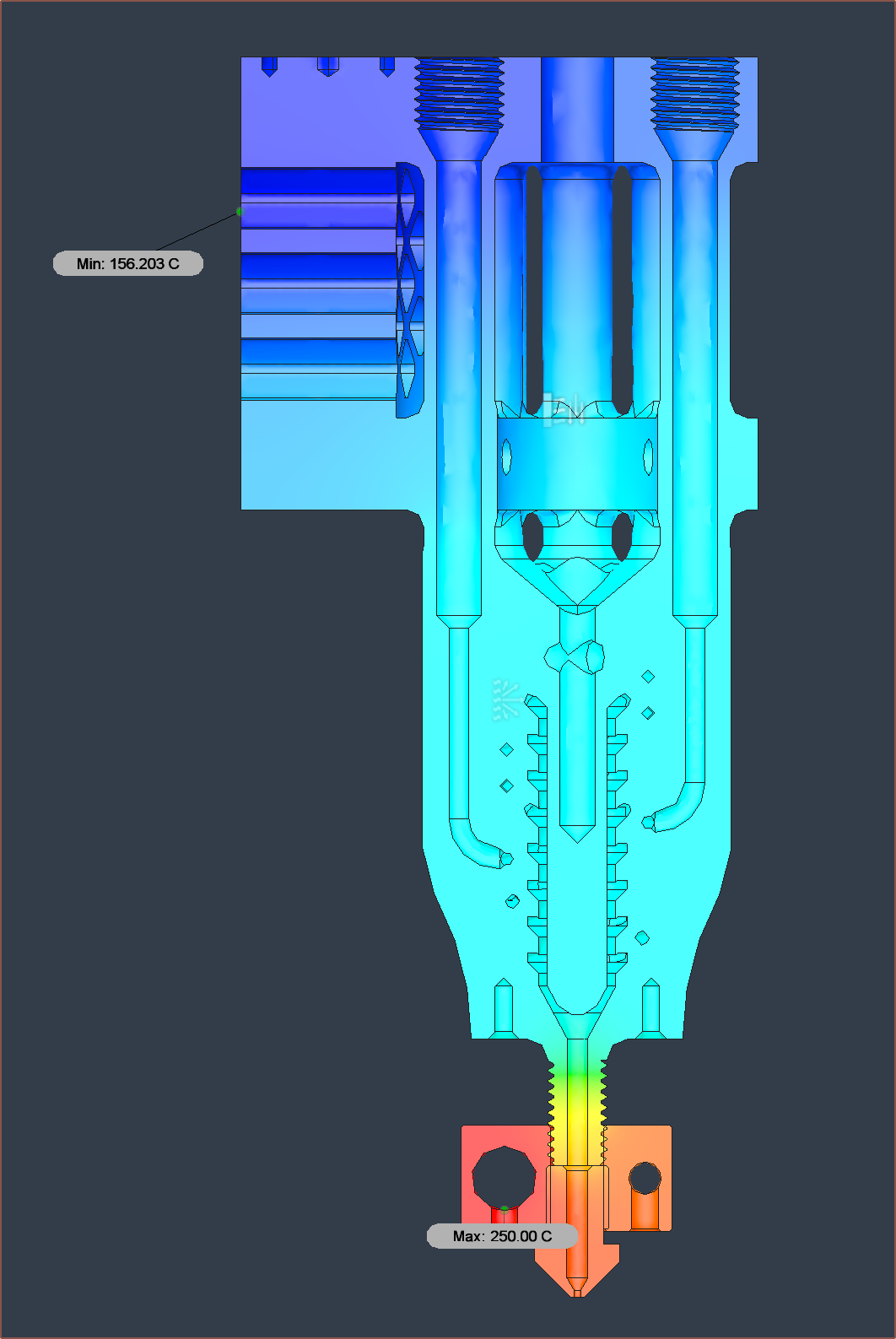
As you can see, the heatsink is mostly ineffective.
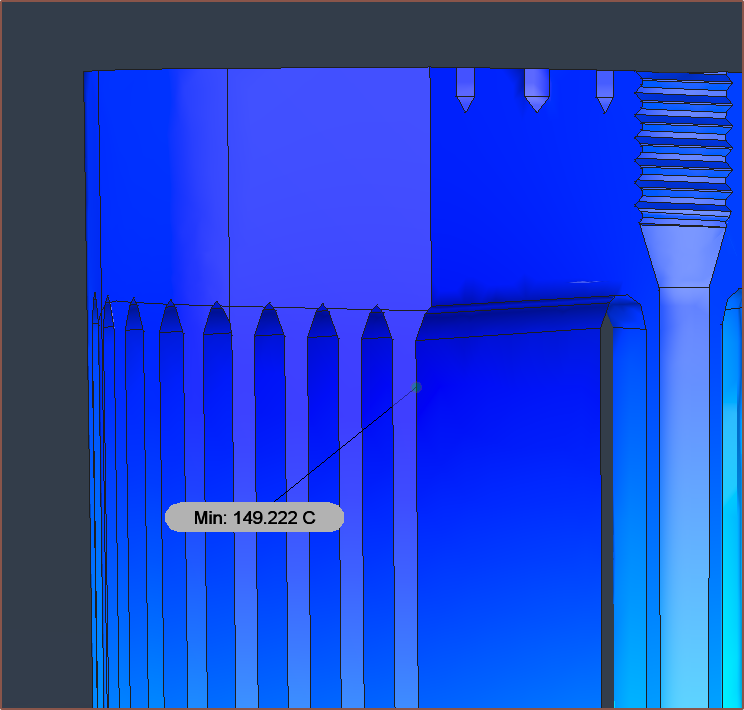 I tried a fin-based design and it slightly improved things, but still nowhere near good enough. It seems that "it's over.", with the only mitigation strategy I can think of being to reduce the amount of material that makes up the vertical tubes by modelling a mesh design.
I tried a fin-based design and it slightly improved things, but still nowhere near good enough. It seems that "it's over.", with the only mitigation strategy I can think of being to reduce the amount of material that makes up the vertical tubes by modelling a mesh design. kelvinA
kelvinA
Discussions
Become a Hackaday.io Member
Create an account to leave a comment. Already have an account? Log In.